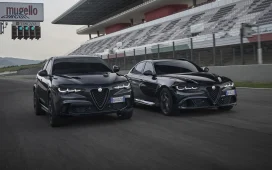Unlock the Editor’s Digest for free
Roula Khalaf, Editor of the FT, selects her favourite stories in this weekly newsletter.
In the summer of 2020 when the Financial Times reported that Japanese government officials had tried to merge Honda and Nissan, sceptics scoffed at the idea as akin to mixing “oil and water”. Nearly four years later, Japan’s second- and third-largest carmakers (behind Toyota) are planning to combine forces to develop electric cars in a bid to survive the coming wave of high-tech, low-cost models from China. While Honda has ruled out a capital tie-up with Nissan for now, the endeavour is the closest the two historic rivals have ever come in terms of working together.
From the early days of their establishment, Nissan and Honda have taken very different paths to growth. When Nissan started in 1934, Yoshisuke Aikawa, its low-profile founder, built the group into a massive conglomerate during the prewar period through a series of aggressive acquisitions that were funded by taking its companies public. In the case of Soichiro Honda, the charismatic founder of the eponymous carmaker, he was famous for his go-it-alone strategy and is said to have criticised alliances for slowing things down. Until recently, that DNA has stayed with the company.
Today, the two corporate cultures remain just as different as in the past, but that does not necessarily mean that the planned partnership is doomed to fail. The reasons that have brought the bitter rivals together are similar, although the degree of desperation may vary. Both Nissan and Honda have stumbled in their traditional approaches to expansion, misreading the pace of market changes in China, and they lack the scale and resources to remain competitive global players.
After a quarter of a century, Nissan and its French alliance partner Renault have sharply cut back their capital ties as both companies acknowledged that the partnership would not be enough to survive the industry disruption caused by the shift to electric vehicles and tougher emission rules. Nissan chief executive Makoto Uchida is blunt on the need for new partners, although the company insists its alliance with Renault and Mitsubishi Motors will not be unwound.
Meanwhile, Honda has recognised that going it alone is no longer a viable strategy, striking a surprise partnership with Sony in 2022 to produce EVs. It also has an alliance with General Motors in fuel-cell vehicles and self-driving technology, but the two carmakers last year scrapped plans to jointly develop affordable EVs owing to differences over cost.
The setback in the alliance with GM was a blow for Honda’s chief executive Toshihiro Mibe, who declared a phaseout from petrol and diesel cars by 2040 when he assumed the role three years ago. Despite this bold target, Honda has been one of the slowest of the big carmakers to roll out EVs.
Both Japanese carmakers, which each sell about 4mn vehicles a year globally, were caught off-guard by the rise of China’s homegrown EV groups, while Nissan missed out on a boom in hybrid vehicles sales in the US because of a lack of offerings in this category.
In a recent FT interview, Uchida said Nissan needed partners such as Honda to acquire scale and share costs. “We need to move drastically faster. I don’t know half a year or a year later what could happen to the industry.”
That uncertainty has also pushed Germany’s Volkswagen to hold talks with Renault to pool resources to develop lower cost EVs. But while the warnings about survival from the industry’s chief executives are dire, it is hard to judge how serious the moves are until products are launched and cost-benefits become clear.
Honda’s tie-up with Sony generated much excitement when it was announced, but it remains unclear how committed the entertainment group is. People close to Sony suggest the project is aimed at gaining manufacturing knowhow of cars, which could then help Sony to sell its automotive image sensors to Tesla and other EV groups.
Nissan and Honda began talks in January, and the scope of their co-operation includes software, core EV components and auto-intelligence technology. But, so far, only a non-binding memorandum has been signed, and both CEOs expressed caution on how far the partnership would expand.
At the end of their joint press conference last month, there was an awkward moment when Uchida and Mibe rejected a request by photographers to shake hands. In many ways, the physical distance between the two CEOs is symbolic of the challenges they face in bridging their differences to ensure that the latest partnership is successful.






